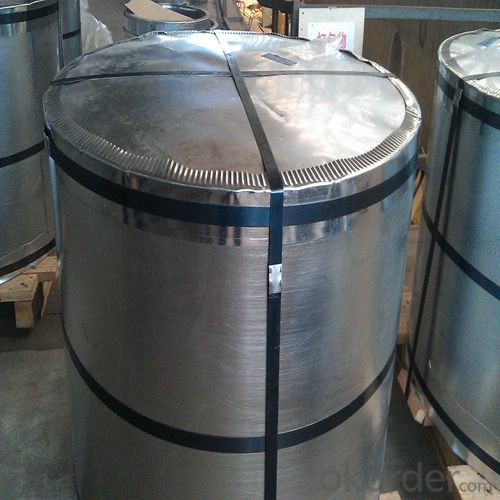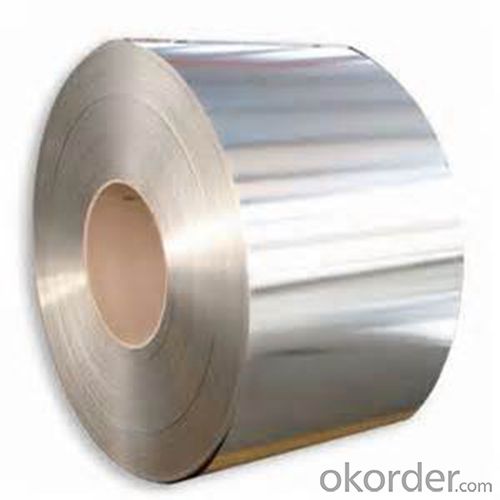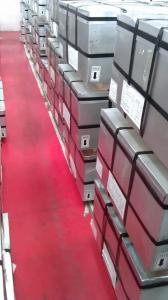Prime Quality Tinplate and TFS for Tin Cans and Containers
- Loading Port:
- Tianjin
- Payment Terms:
- TT OR LC
- Min Order Qty:
- 25 m.t.
- Supply Capability:
- 15000 m.t./month
OKorder Service Pledge
OKorder Financial Service
You Might Also Like
Specification
1.Structure of Prime Quality Tinplate and TFS for Tin Cans and Containers Description
Tin Free Steel (TFS) is thin black plate with two coats; one of metal chrome film and the other of chromium oxide. TFS is ideal for the manufacturing of crowns, container ends & shallow drawn cans etc. TFS is also known as Chromium coated steel.
2.Main Features of the Prime Quality Tinplate and TFS for Tin Cans and Containers
Corrosion Resistant
Easier to recycle.
Sulphur Blackening Resistance: TFS has sulphur resistance properties, which can be used for canning protein- rich food such as fish.
Coating: The coating in TFS is not amphoteric (having the characteristic of an acid and a base, is a compound that can react as either an acid or a base). This means that detergents and dispersion colors can be packed easily.
Paint Adhesion : TFS possesses better paint adhesion properties, thus making it ideal for DRD cans and adhesive bonded cans.
Weldability: TFS can be welded when metallic coating layers are removed by edge grinding.
TFS should be Lacquered / Coated to prevent rust in humid condition.
3.Prime Quality Tinplate and TFS for Tin Cans and Containers Images


4.Prime Quality Tinplate and TFS for Tin Cans and Containers Specification
Specification of :
Material: MR,SPCC
Thickness:0.15mm - 0.50mm
Width: 600mm -1150mm
Temper: T1-T5
Annealing: BA & CA
Coil Inner Diameter: 508mm
Weight: 6-10 tons/coil 1~1.7 tons/sheets bundle
Oil: DOS
Surface: Finish,bright,stone,matte,silver
5.FAQ of Prime Quality Tinplate and TFS for Tin Cans and Containers
-What is MOQ?
Our MOQ would be 25 tons.
- Do you only have prime quality TFS ?
We can supply both prime and second quality TFS.
- Q: What are the different ways to open tinplate cans?
- There are several different ways to open tinplate cans. The most common method is to use a can opener, which is a handheld device specifically designed for this purpose. Another option is to use a knife or a pair of scissors to carefully pierce and cut open the lid. In some cases, cans may have pull tabs or easy-open lids that can be peeled back without the need for any tools. Additionally, there are electric can openers available that automate the process for convenience.
- Q: How does tinplate contribute to the overall portability of packaging?
- Tinplate contributes to the overall portability of packaging due to its lightweight yet durable nature, making it easy to transport and handle. Additionally, its excellent resistance to corrosion and ability to preserve the quality of the packaged product ensures that packaging remains intact during transportation, further enhancing its portability.
- Q: What are the advantages of tin packaging?
- 1. good mechanical properties: tinplate cans relative to other containers, such as plastic, glass, paper containers and strength, and good rigidity, it is not easy to break. It is not only used for small sale packing, but also the main container for large transportation package.2.: excellent barrier tin barrier properties than any other materials are excellent, gas barrier properties, moisture resistance, shading and aroma were good, and the sealing is reliable, reliable protection products.
- Q: What are the printing options for tinplate?
- The printing options for tinplate include lithography, screen printing, and digital printing.
- Q: What about tin cans?
- Galvanized iron: galvanized iron for daily use, such as box, water pipe, etc.Tin: tin plated iron. Usually used for food packaging. Such as canned goods
- Q: What are the main market entry barriers for new players in the tinplate industry?
- The main market entry barriers for new players in the tinplate industry include high capital requirements for setting up manufacturing facilities, the need for advanced technology and equipment, limited access to raw materials, high competition from established players, and the necessity to comply with stringent quality standards and regulations. Additionally, building relationships with suppliers and customers, establishing a strong distribution network, and overcoming brand recognition challenges pose further barriers for new entrants in the tinplate industry.
- Q: What are the different tinplate surface finishes?
- The different tinplate surface finishes include bright, stone, matte, and silver.
- Q: How does tinplate packaging contribute to reducing food waste?
- Tinplate packaging helps reduce food waste by providing a durable and protective barrier that extends the shelf life of food products. Its resistance to oxygen, light, and moisture helps prevent spoilage and maintains the freshness of food for longer periods. Additionally, tinplate packaging is 100% recyclable, promoting sustainable practices and reducing environmental impact.
- Q: How does tinplate packaging contribute to food safety?
- Tinplate packaging contributes to food safety by providing a protective barrier that prevents contamination from external factors such as light, air, and moisture. This helps to preserve the quality, freshness, and nutritional value of the packaged food. Additionally, tinplate packaging is highly resistant to corrosion, ensuring that harmful substances do not leach into the food. Its durability also prevents physical damage during transportation and storage, reducing the risk of contamination.
- Q: Can tinplate be used for non-packaging applications?
- Yes, tinplate can be used for non-packaging applications. Tinplate's corrosion resistance, durability, and versatility make it suitable for various non-packaging uses such as construction materials, automotive parts, electrical equipment, and decorative items.
Send your message to us
Prime Quality Tinplate and TFS for Tin Cans and Containers
- Loading Port:
- Tianjin
- Payment Terms:
- TT OR LC
- Min Order Qty:
- 25 m.t.
- Supply Capability:
- 15000 m.t./month
OKorder Service Pledge
OKorder Financial Service
Similar products
Hot products
Hot Searches
Related keywords


























